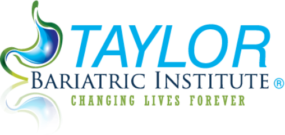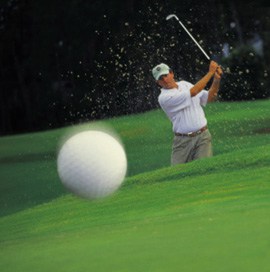Three tips to get the most physical benefit out of your golf game
After the excitement of the US Open this weekend, you may find yourself itching for a day on the green. Often viewed as little more than a sport of leisure, golfers’ credentials as athletes are often called into question, but golf’s effectiveness as a workout is essentially up to how it’s played. Depending on what you do, hitting the links can either be a relaxing, near-sedentary activity or a calorie-burning day of fun in the sun.
If you’re a patient of a weight loss procedure like gastric bypass, low-impact exercises are a crucial part of maintaining your weight loss as you move closer to your ultimate goal. Whether you’re an avid golfer or have never swung a club in your life, golfing can be an excellent form of low-impact exercise after weight loss surgery—if you learn how to get the most out of it. Next time you head to the course, try implementing these rules for making the most of your golfing workout.
Ditch the cart.
Golf courses are huge, meaning that a lot of time during a typical game is spent on travel. Though it might be tempting to zip around all 18 holes in a golf cart, you’ll get much more physical activity out of the day if you walk. Walking is generally regarded as one of the best forms of exercise after weight loss surgery, offering an easy and low-impact method of exercise that can be done by just about anyone. With the miles you’ll walk on a typical course and the effort of swinging the club, you’ll be sure to burn tons of calories in a round. Without a cart, you’ll also be carrying your own clubs (or you can use a push or pull cart), which will burn even more calories.
Stretch.
It might not seem like you need to stretch a lot or have a warm-up session before a game of golf, but it’s a sport like any other. If you jump right into swinging, you risk injuring your muscles or playing an inferior game. Professional golfers typically engage in about 20 to 30 minutes of stretching before they even hit the course, while some golfers even try yoga or Pilates to strengthen their core, lower back and hip muscles that a good golf position relies on. Doing these kinds of activities, or just getting a simple stretch or warm-up in before playing, will help you hit better and play longer.
Hydrate.
The typical 18-hole round can take more than four hours, all of which is spent in the hot sun. To save yourself from getting dehydrated, don’t wait until you’re done with the game to get a drink. Instead, drink plenty of water before and during play–and no, beer doesn’t count. Though alcohol may be popular on the golf course, it won’t help you stay hydrated and is detrimental to the health of weight loss surgery patients, particularly patients of gastric bypass.
In addition to being a great form of relaxation and stress relief, golf can be a great form of low-impact, moderate exercise when played right. Walking the course will give you aerobic exercise to increase your blood circulation and energy levels, while carrying your clubs can build bone and muscle strength. Ultimately, each hour of golf can burn between 330 and 490 calories, meaning over 1,000 calories burned in a full four hour, 18-hole game. Just be sure not to wear yourself out too much—golf seems like a leisure sport, but can get tiring quickly without a cart or caddy.


